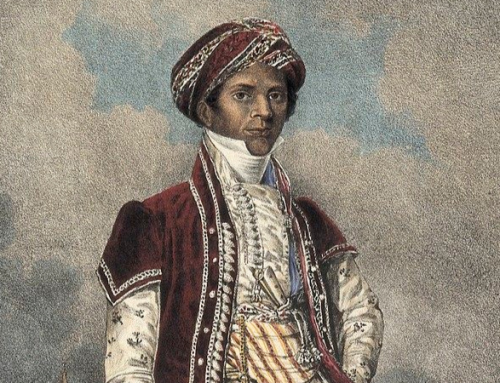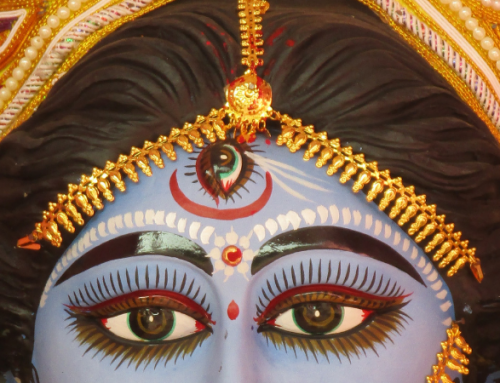Family Vows
Vasudhaiva kutumbakam, says an ancient maxim of India: Our family is our earth, in the earthy sense of being our foundation, our support, the thing we walk on, live on, rely on. This age-old precept is linked to the ancient truth that we are bound to one another by the limitations of our biology. When the human species elected to enlarge its brains our heads followed suit, heads which must be delivered before they grow too large to pass through the female pelvic girdle. Our commitment to neurological advancement thus ensured that we would have to be born incompletely developed. During the first several years that our development continues outside the womb we are utterly helpless, perfectly dependent on our families for our every need.
We still share a fundamental biological and emotional need for each other even after we become physically mature enough and psychically surly enough to live on our own. Studies from around the world suggest that single people are at greater risk for a wide variety of diseases; married couples and their children even suffer less from tooth decay and have better gums than do members of divorced and bereaved families. To tend to one’s family well is believed by many even today to be the royal road to self-preservation and self-advancement. The family (however extended) has long been a focus of attention in India, and there its stock continues to hold steady even as it plummets in many other parts of today’s world.
Women are in India as elsewhere the principal architects and conservators of the family, and and their functions as nourishers still include calling on the divine for protection and assistance. Women’s spiritual practices in India have long centered on the multiform skillful means through which the family’s health and well-being can be safeguarded. The most common of these has been for tens of centuries and continues to be today the vow (vrata). Vows are covenants with Nature which may be personal or collective, regular or occasional. They may involve the performance of an unusual task (e.g. the offering of a certain number of specific flowers or fruits) or the interruption of some usual habit (like eating). Most vows involve fasting of some kind: from food, from sex, from sleeping on a bed. Vows can be highly ritualized but they need not be formal if your desire for an outcome is sufficiently clear and strong; though ritual is important to a vow devotion always takes precedence.
When a sacred story (katha) is ritually read or recited in the context of a vow it becomes a vrata katha, a ‘special ritual tale.’ A vow’s story is its myth, its exposition of that facet of reality that the vow represents and its explanation of how that reality came to be that way. “Pledge stories” help to transmit knowledge to the contemporary family that was collected, often at great personal expense, by those who came before us.
Indian vow tales can be traditional stories extracted from sacred texts like the Vedas or the Puranas or folktales handed down within a family. Those homes which host vows usually also promote all variety of what are commonly known as ‘grandmothers’ stories’, legends that disseminate family culture along the lineage and often lack formal worship rituals. Each new story that a child hears challenges and nourishes brain and mind, fostering visualization ability as it propagates the tale. When such a tale becomes affiliated with a vow its potential benefits increase exponentially.
Most vows have narratives associated with them, and even an ordinary story may be promoted to the rank of vow tale. What is important is that it be recounted with devotion on a holy day in a holy way. Vow rituals can be performed either by the vowee or by a professional, for a vow tale’s teller and listeners both receive benefits therefrom when they contribute their faith and devotion to the process. Professional storytellers abound in India; some work mainly for offerings from their gratified clients, others for the sheer joy of telling their tales. Performers who possess knowledge that their listeners lack serve a priest-like role of interlocutor between the divine and its devotees.
Vow-observers strive to maintain total purity of mind, speech and action as long as they are vow-bound, and often climax their ceremony with the hearing or reciting of a vow tale. Preliminary ritual worship attunes the worshipers’ minds to focus more efficiently on the purpose for the event and fills them with the devotion they need to distill the most from the katha. Those listeners whose devotion is sufficiently deep and sincere experience, at the story’s climax, some variety of catharsis. Those who repeat the entire process once each week, fortnight or month enjoy regular emotional and spiritual renewal. Weekly vows are popular because each weekday is ruled by one of the planets recognized by Jyotisha (Indian astrology), and placating a planet is said to promote prosperity and ease in life. Saturn is most important of these planets, and Saturday (for Saturn) and Thursday (for Jupiter) host more vows than any other day.
Vow stories often serve to formalize and ritualize a story which explains some significant cultural custom or observance. For example, since Vedic times Indian folklore has taught that the Moon periodically releases its nectar to the earth. The legend of Kojagiri Purnima holds that the Moon ‘sweats’ nectar each year on the night of autumn’s brightest full moon. This ‘Moon-sweat’ nectar is said to be collectible in a cup of milk put out beneath that moon’s rays, and some families make the ritual ‘Placing of the Milk’ into a sweet little ceremony that brings moon, elixir and family solidarity together in a charmingly lunar sort of way.
A vow story’s specific content is often less important to its effect than is the sincerity and fervor with which it is told. This has permitted some vow stories to twist over time from stories of the transcendent into suggestions for dealing with mundane crises that seem devoid of any cosmology or symbolic significance. Friday has become the day of the Great Goddess, and the most recent versions of the vow for Fridays all center around Santoshi Ma, a goddess who was practically unheard of until the Seventies. For her family’s benefit a woman might commit to a period of eight or eleven or more consecutive Fridays of fasting, visiting Santoshi Ma’s temple, and reciting Santoshi Ma’s marvels. Her cult, which has by now spread to all parts of the country, snowballed in the wake of the dramatic success of a Hindi film dedicated to her miracles!
Someone has correctly commented that Indians “play house” with their gods and goddesses, enticing them in to become part of the family. The average Westerner might find it very peculiar to see a devotee of Santoshi Ma tossing coins at a movie screen on which her worship appeared, or a housewife decorate her TV before the next episode of the epic Ramayana. But such offerings when made in earnest draw into the family benevolent forces which exist beyond the purview of the conscious mind. Cynicism, which poisons a tale’s magic, has no place in family health; stories are nourished by the sincerity with which they are told and heard. Each bona fide teller adds something of her own to a vow tale as she passes it on; she “waters it with her own blood.” Like wealth, food, knowledge, and children, stories must circulate if they are to sprout anew each generation from the shared stock of our cultural family.
If you want a vow tale to act therapeutically for you, you will have to create for yourself a sacred space and time in which to use it. This you can accomplish only when you can temporarily divorce yourself from external space and time, which you can begin to do by creating a sacred space. You can create such a space anywhere in your house; even a corner of a room, by removing from this corner anything that might remind your mind of your quotidian existence and placing there objects which are holy for you. If you are consistent with your practice in that location the peaceable vibrations you create will permeate it and eventually you will begin to feel calm and centered whenever you sit there.
To enter into sacred time select a time of day or night when no one is likely to disturb you and sit in your space insulated from all mundane influences. Whatever may be your purpose please make adequate sacred space, time and attitude for your story, surrender to it, and permit it to enrich your life. If you persevere you will eventually realize that all humankind, all life, and in fact the entire cosmos is part of your family. Then you will realize the truth of the other interpretation of the phrase vasudhaiva kutumbakam: “The earth (and by extension everyone and everything on it) is our family.”
When the universe itself becomes our support our family circle widens further. A Sanskrit verse spells out this family of virtues: “With perseverance for your father, forgiveness for your mother, peace for a spouse, truth and compassion as sisters, control of the mind as a brother, the ground for a bed, the ten directions for clothing, and the bliss of knowledge for food, where is there any occasion for fear, O yogi?” When fear disappears life becomes meaningful and beauty enters therein.
Copyright © 1997
Robert Edwin Svoboda
If you found this article interesting, you might enjoy Dr. Svoboda’s book, The Greatness of Saturn.


